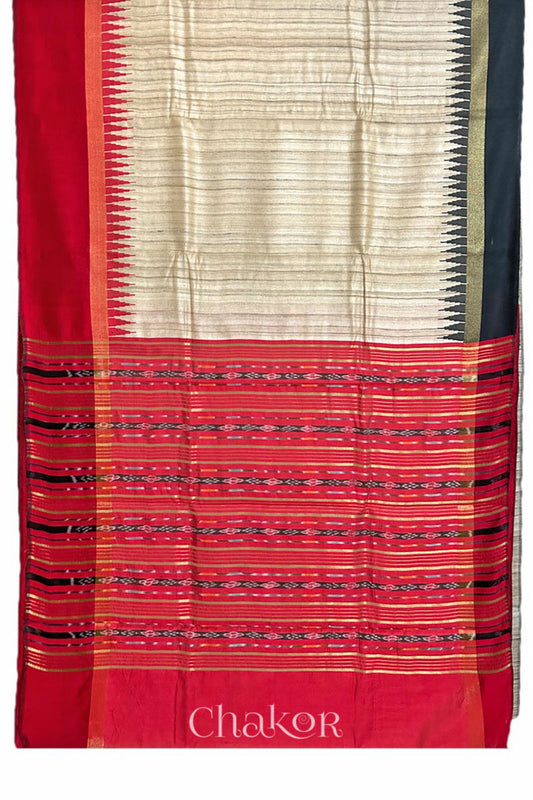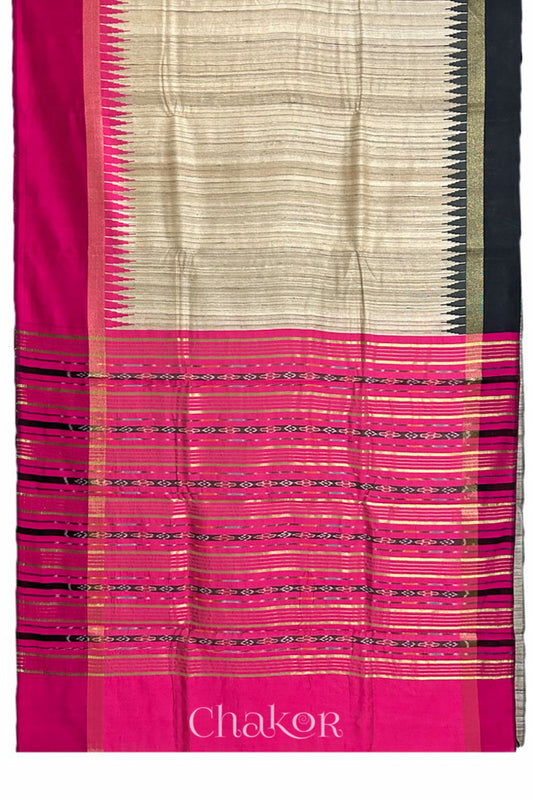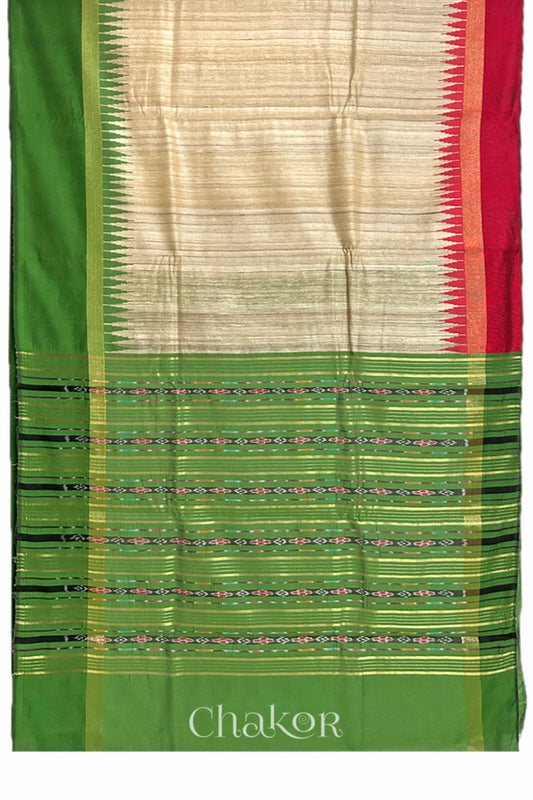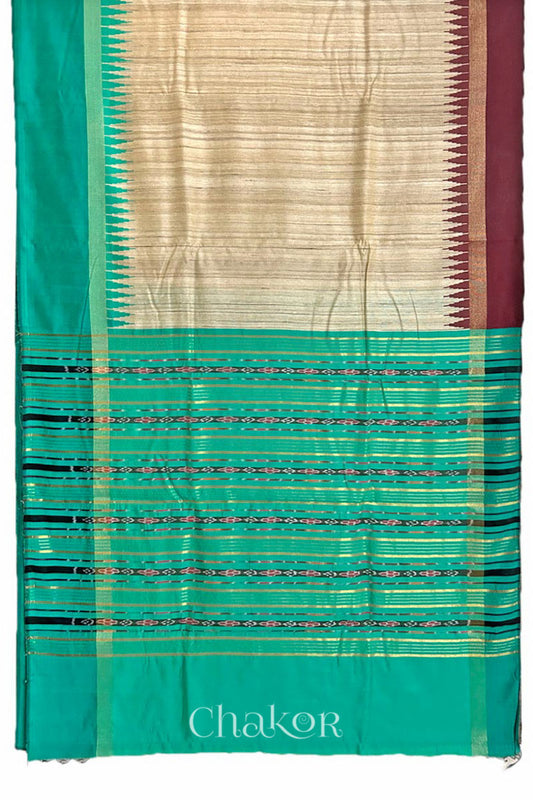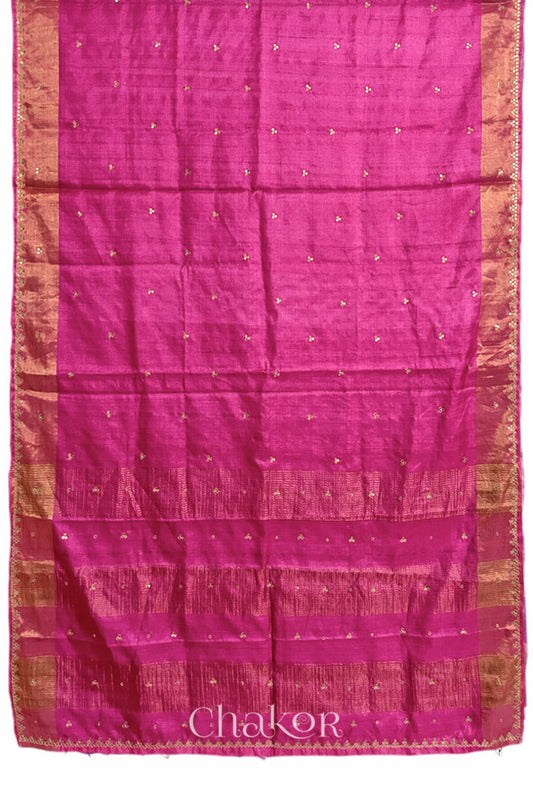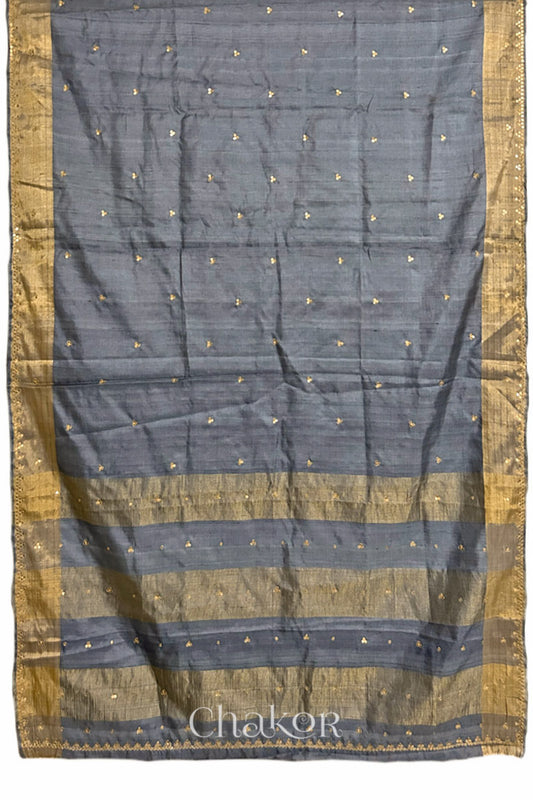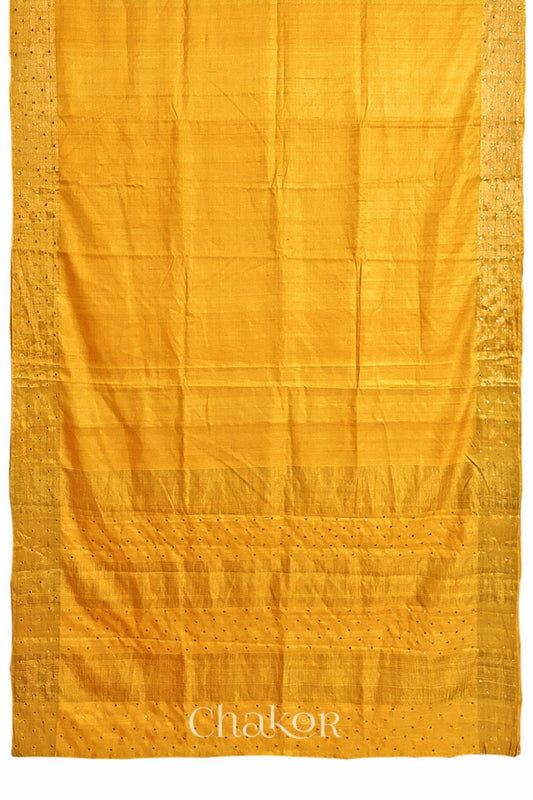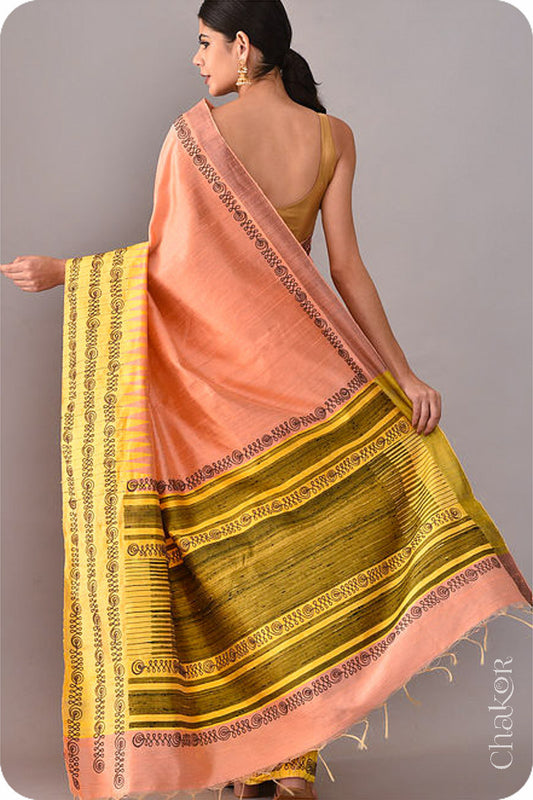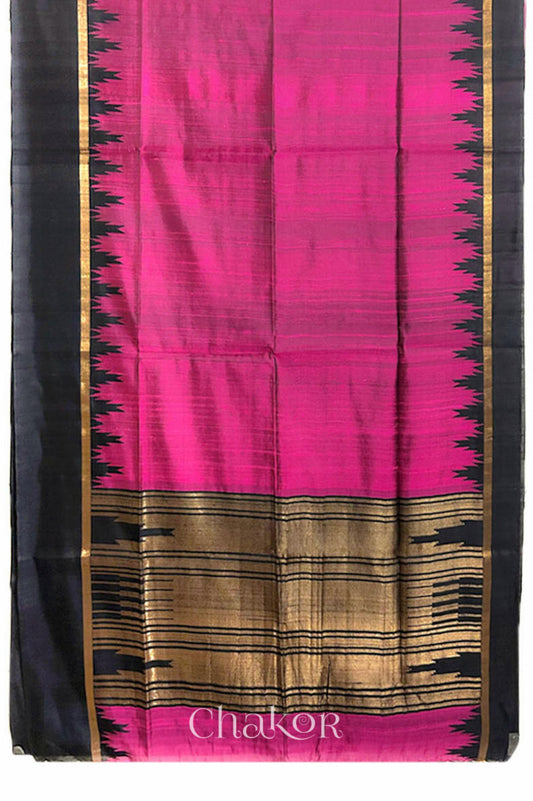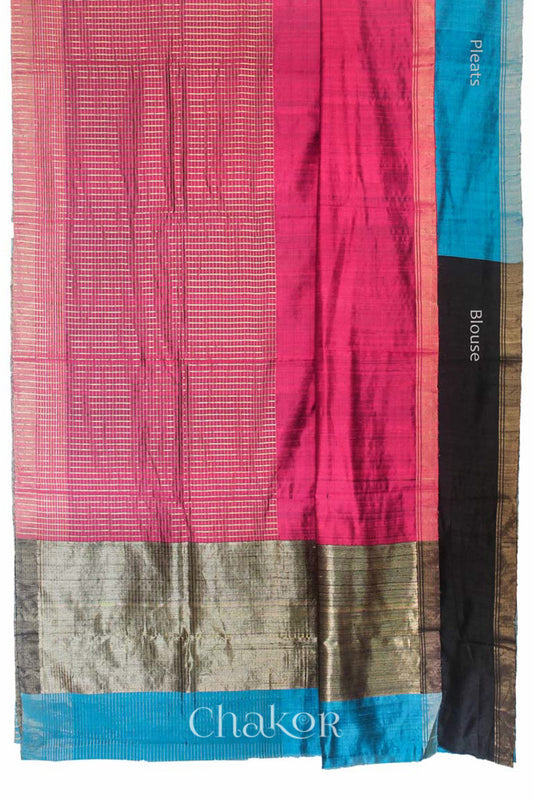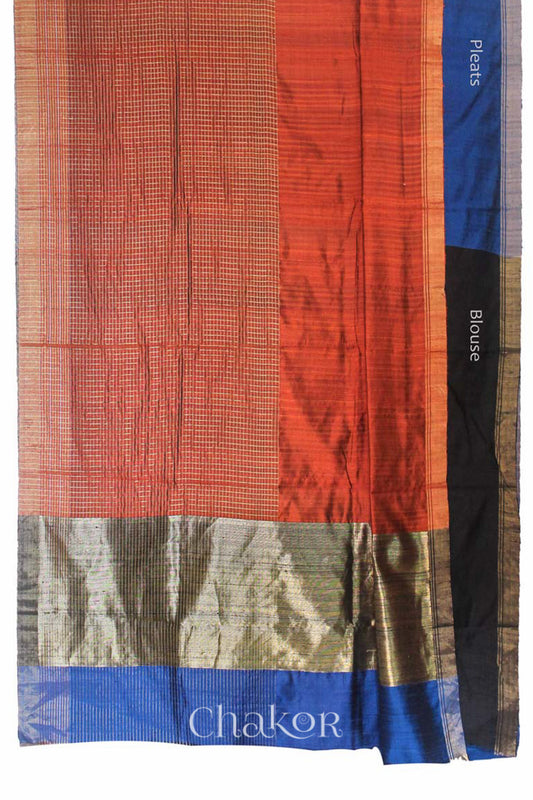Collection: Tussar - handwoven wild silk
Chakor’s Elegant Tussars - a collection of unique handwoven sarees with exquisite temple borders from Chhattisgarh.
-
Natural Red Handspun Tussar Silk Handloom Saree
Regular price Rs. 11,500.00Regular priceUnit price / perRs. 11,500.00Sale price Rs. 11,500.00 -
Natural Pink Handspun Tussar Silk Handloom Saree
Regular price Rs. 11,500.00Regular priceUnit price / perRs. 11,500.00Sale price Rs. 11,500.00 -
Natural Green Handspun Tussar Silk Handloom Saree
Regular price Rs. 11,500.00Regular priceUnit price / perRs. 11,500.00Sale price Rs. 11,500.00 -
Natural Jade Handspun Tussar Silk Handloom Saree
Regular price Rs. 11,500.00Regular priceUnit price / perRs. 11,500.00Sale price Rs. 11,500.00 -
Pink Tussar Silk Saree
Regular price Rs. 18,200.00Regular priceUnit price / perRs. 18,200.00Sale price Rs. 18,200.00 -
Grey Tussar Silk Saree
Regular price Rs. 18,200.00Regular priceUnit price / perRs. 18,200.00Sale price Rs. 18,200.00 -
Yellow Tussar Silk Saree
Regular price Rs. 14,500.00Regular priceUnit price / perRs. 14,500.00Sale price Rs. 14,500.00 -
Peach Yellow Tussar Raw Silk Saree
Regular price Rs. 13,500.00Regular priceUnit price / perRs. 13,500.00Sale price Rs. 13,500.00 -
Pink Black Tussar Raw Silk Saree
Regular price Rs. 12,800.00Regular priceUnit price / perRs. 12,800.00Sale price Rs. 12,800.00 -
Pink Turquoise Tussar Silk Saree
Regular price Rs. 11,400.00Regular priceUnit price / perRs. 11,400.00Sale price Rs. 11,400.00 -
Rust Blue Tussar Silk Saree
Regular price Rs. 11,400.00Regular priceUnit price / perRs. 11,400.00Sale price Rs. 11,400.00
Tussar - handwoven wild silk
As versatile as it is timeless, Tussar — also known as Tussah silk or Kosa in Sanskrit — is a wild silk made from the cocoons of wide-winged moths, yellowish-brown in colour. These moths are a quiet wonder of nature. Their wings are marked with circular mirror-like patterns, and when seen closely, they’re said to reflect the beholder — a delicate reminder of nature’s own artistry.
Primarily produced in India, Tussar is prized for its natural golden hue and rich texture. Its signature dull-gold sheen makes it an ideal base for embroidery and printing alike. More textured than mulberry silk, Tussar carries an earthy elegance that lends itself beautifully to handwoven sarees and fabric.
At CHAKOR, we explore the tactile beauty of pure Tussar through classic weaves, temple borders, ikat pallus, and subtle zari or sequin embellishments — bringing a quiet luxury to your wardrobe through the lens of timeless craft.
-
 Tussar Silk weaving
Tussar Silk weaving
-
 Age Old Indian Crafts
Age Old Indian Crafts
-
 Exclusive Collections
Exclusive Collections
-
 Handmade Locally
Handmade Locally
-
 Artisanal Craftsmanship
Artisanal Craftsmanship
-
 Sustainable Slow Fashion
Sustainable Slow Fashion
The Elegant Silk - Tussar

Tussar, also known as tussah silk, weaving stands as a venerable craft steeped in history, sharing its origins with raw silk and rooted in medieval times. Originally dubbed Kosa silk in Sanskrit, its exact inception remains somewhat elusive. Derived from the cocoons of silkworms belonging to the Antheraea mylitta species, which thrive on Arjun and Saja tree leaves, tussar silk boasts a natural golden sheen and textured appearance. While it possesses a slightly coarse texture compared to other silks, its allure lies in its rich, earthy appeal.
India emerges as the world's second-largest producer of Tussar silk, with Jharkhand, Bihar, West Bengal, Chhattisgarh, and Madhya Pradesh contributing significantly. These regions showcase various types of tussar silks:
Pure Tussar Silk : This fabric, woven entirely from Tussar silk fibers, exudes a rich texture, organic feel, and natural sheen, ideal for diverse textiles such as sarees, dress materials, stoles, and scarves.
Matka Tussar Silk : A blend of Tussar silk with other fibers like cotton or wool, Matka Tussar silk boasts enhanced strength, durability, and texture, suitable for heavier garments and home furnishings.
Ghicha Tussar Silk : Featuring short fibers spun into yarn and woven into fabric, Ghicha Tussar silk presents irregular textures, unique patterns, and rustic charm.
Tussar Ghicha Silk : A fusion of Tussar silk and Ghicha Tussar silk, this variant offers a captivating interplay of textures, patterns, and colors, often used for traditional garments.
Matka Ghicha Tussar Silk : Combining Tussar silk, Ghicha Tussar silk, and other fibers like cotton or wool, this blend results in a textured surface and enhanced strength, popular for both garments and home textiles.
Khadi Tussar Silk : Hand-spun and hand-woven, Khadi Tussar silk showcases the meticulous craftsmanship of skilled artisans using traditional spinning wheels and handlooms.
Chhattisgarh, renowned for its rich textile heritage, particularly in silk weaving, hosts various silk weaving traditions, with Maheshwari silk and Kosa silk leading the way. Clusters and communities across regions like Raigarh, Bilaspur, and Surguja continue to nurture these traditions, passing down skills through generations. Handloom weaving in Chhattisgarh allows for intricate designs and customization, with vibrant colors, intricate patterns, and traditional motifs often inspired by nature and folklore. Natural dyes derived from plants and minerals further enhance the fabric's organic appeal and promote sustainable practices.
The products of silk weaving in Chhattisgarh span sarees, dupattas, dress materials, and home furnishings, each embodying elegance, lightness, and cultural significance. Silk sarees, in particular, are cherished symbols of cultural identity and tradition, integral to weddings, festivals, and auspicious occasions.
Tussar silk can be woven using various techniques, including handloom weaving, power looms, or jacquard looms. Handloom weaving is the most traditional and labor-intensive method. The weavers skillfully interlace the warp and weft threads to create the fabric. The weaving process requires precision and attention to detail to ensure uniformity and accuracy in the patterns.
Distinctive features like the Ganga Jamuna border, weaving techniques, and regional influences add depth and diversity to Tussar silk sarees across India, reflecting the cultural vibrancy and artistic heritage of each region.

CHAKOR's Elegant Tussars
A Collection of tussar silk sarees elevates this legacy, embodying Chhattisgarh's rich heritage, masterful craftsmanship, and the innate splendour of tussar silk. Their unique textures, vibrant colors, and elegant designs, employing techniques like half & half sarees, Temple borders in Interlock weaving, Sambalpuri ikat pallu, Khadi tussar, mulberry tussar blend & embellishments like kutch embroidery, mirror & sequin embroidery, showcase the magnificence of Indian textiles in all its grandeur.




